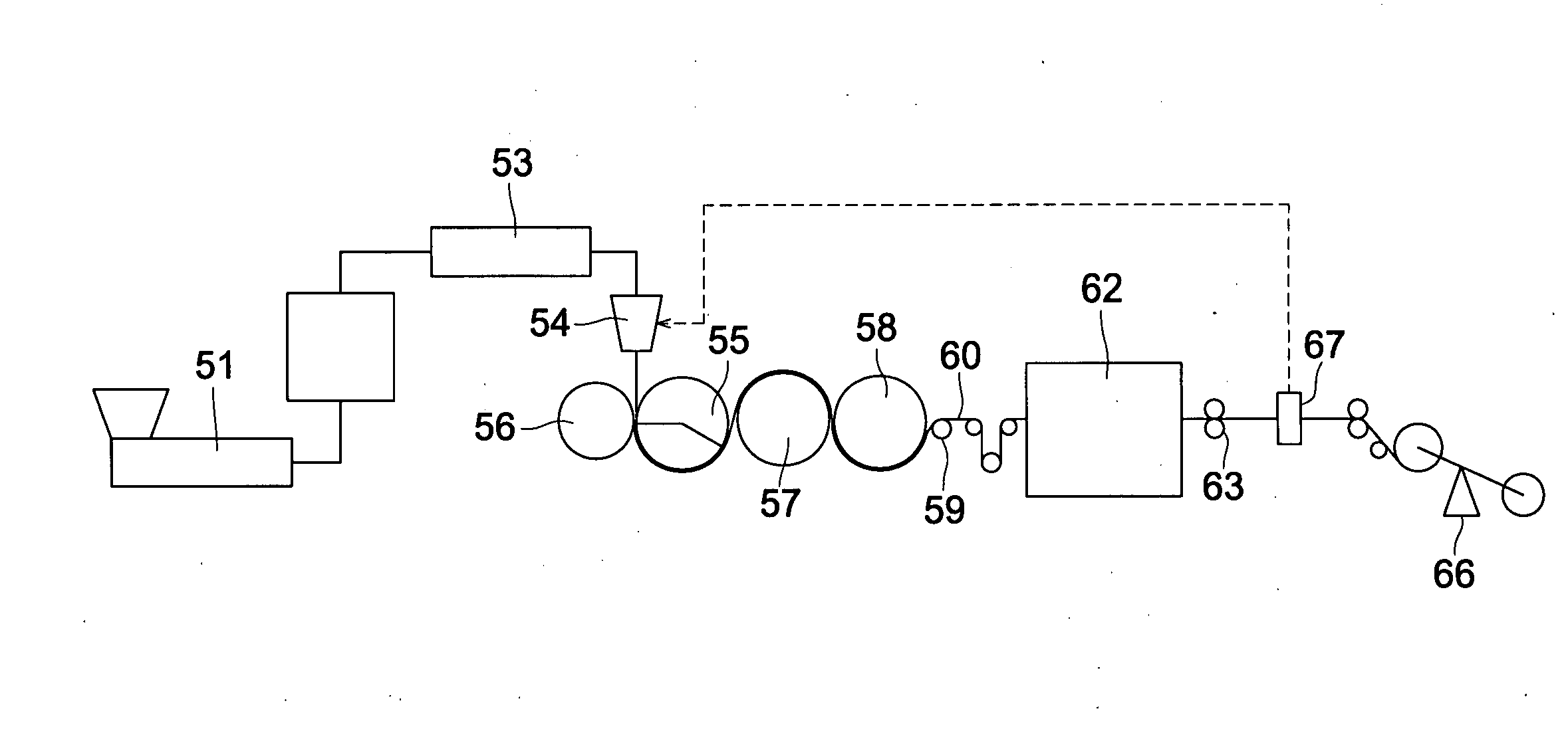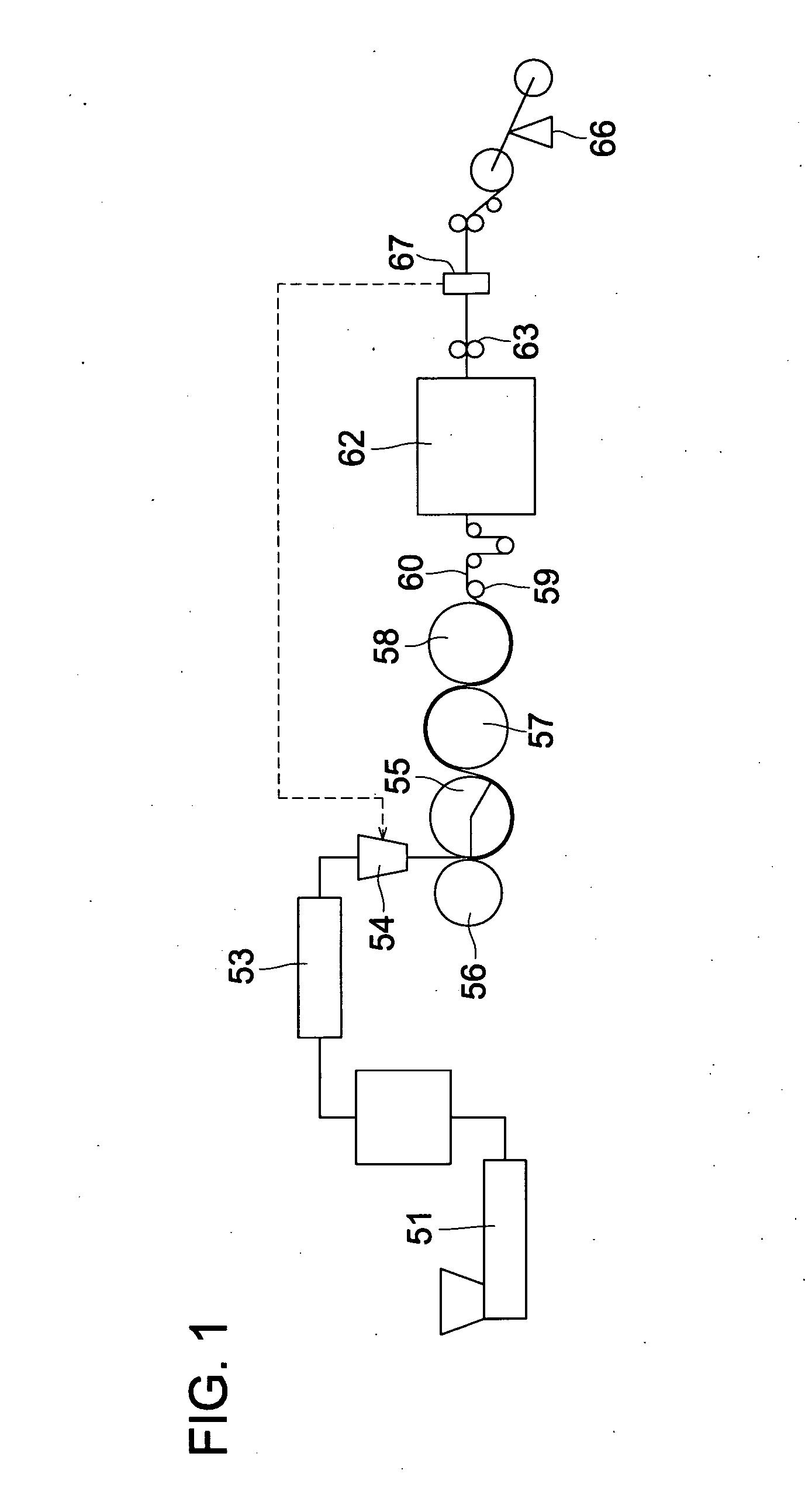Optical Film, Method of Producing the Same and Image Displaying Apparatus Employing the Optical Film
a technology of optical film and method, applied in the direction of instruments, polarising elements, cellulosic plastic layered products, etc., can solve the problems of large-scale apparatus required to evaporate solvent, weak stripe defect of obtained film, and insufficient method to meet the requirement. , to achieve the effect of reducing the number of foreign substances
- Summary
- Abstract
- Description
- Claims
- Application Information
AI Technical Summary
Benefits of technology
Problems solved by technology
Method used
Image
Examples
example 1
[1369]
[Preparation of Optical Film 1]Cellulose acetate propionate (acetyl100mass partssubstitution degree of 1.95, propionylsubstitution degree of 0.7, numberaverage molecular weight of 75,000,dried at 140° C. for 5 hours, glasstransition temperature: Tg = 174° C.)Trimethylol propane tri benzoate10mass partsIRGANOX-1010 (produced by Ciba1mass partSpecialty Chemicals)
[1370]After mixing the above materials using a V-shaped mixer for 30 minutes, the materials were melted at 220° C. and cylindrical pellets of 4 mm in length and 3 mm in diameter were formed using twin screw extruder 51 (PCM30, produced by IKEGAI Corp.) shown in FIG. 1. At this time, nitrogen was added together with the material from extruder 51 inlet to reduce the oxygen concentration.
[1371]Subsequently, the pellets were supplied to single screw extruder 53 (GT-50, produced by Plastics Engineering Laboratory) having a diameter of 50 mm and equipped with casting die 54 to form a film.
[1372]The preset temperature of the si...
example 2
[1403]Optical films were prepared in the same manner as Example 1 except that the high refractive index layer and the low refractive index layer were not applied, whereby optical films each having a hard coat layer were obtained. When the number of foreign substances of these optical films was evaluated, the same results as Example 1 were obtained.
example 3
[1404]Optical films were prepared in the same manner as Example 1 except that, after the hard coat layer was subjected to a adhesion improving treatment, the low refractive index layer was applied without applying the high refractive index layer, whereby optical films each having a two layer structure of the hard coat layer and the low refractive index layer were obtained. When the number of foreign substances of these optical films was evaluated, the same results as Example 1 were obtained.
PUM
| Property | Measurement | Unit |
|---|---|---|
| Mass | aaaaa | aaaaa |
| Fraction | aaaaa | aaaaa |
| Fraction | aaaaa | aaaaa |
Abstract
Description
Claims
Application Information
 Login to View More
Login to View More - R&D
- Intellectual Property
- Life Sciences
- Materials
- Tech Scout
- Unparalleled Data Quality
- Higher Quality Content
- 60% Fewer Hallucinations
Browse by: Latest US Patents, China's latest patents, Technical Efficacy Thesaurus, Application Domain, Technology Topic, Popular Technical Reports.
© 2025 PatSnap. All rights reserved.Legal|Privacy policy|Modern Slavery Act Transparency Statement|Sitemap|About US| Contact US: help@patsnap.com



